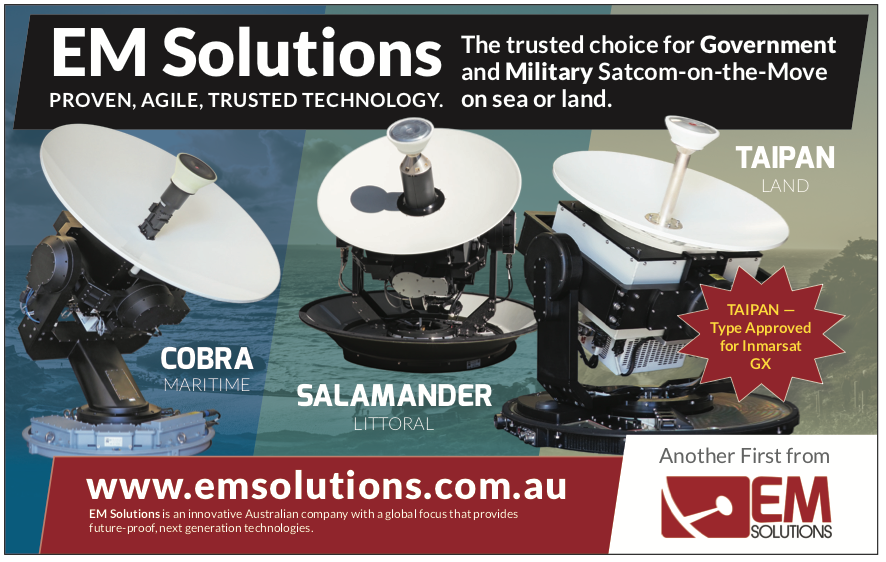“Kleos has had a productive start to 2021, with on-orbit commissioning and testing of our Scouting Mission satellites as well as the development of the complex data processing and subscriber management systems required to fulfill our contracts ahead of data delivery and revenues in Q2 2021, and progressing the development and launch of our second and third satellite clusters.
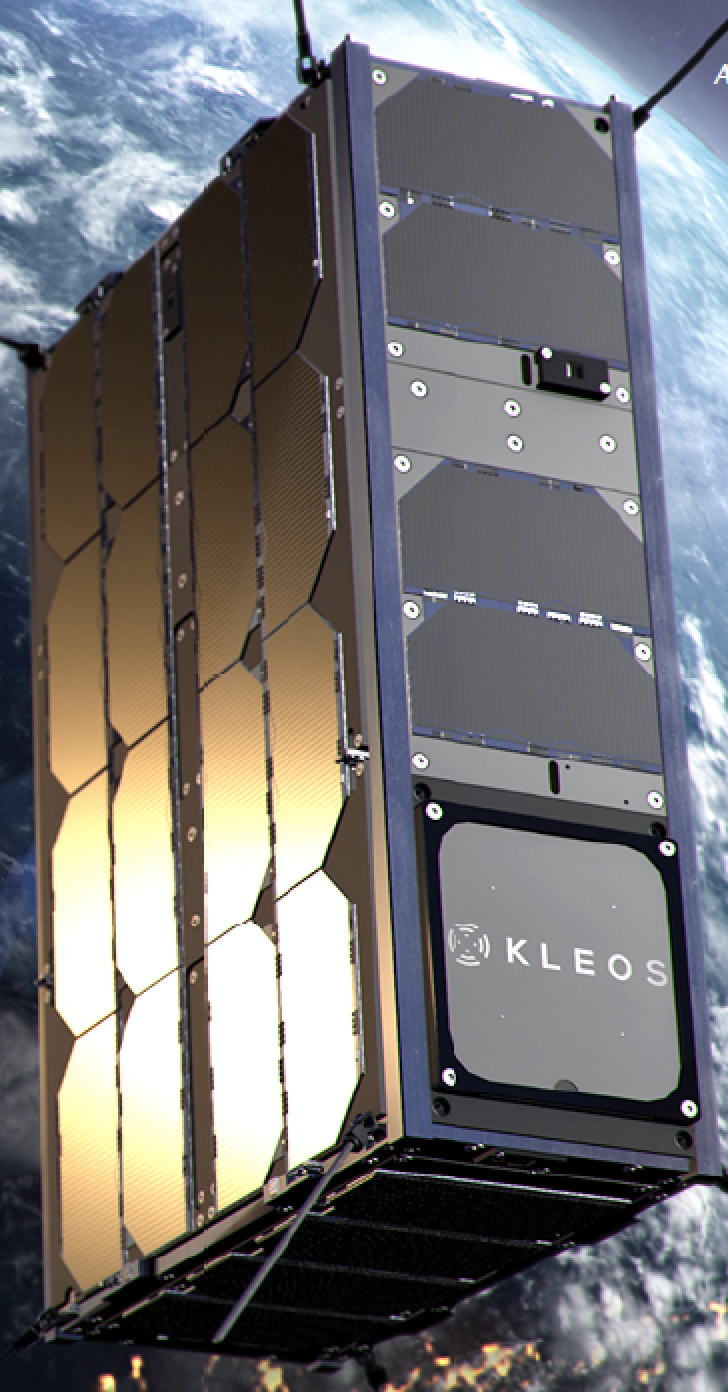
“Our growing constellation increases the capability and value of our geospatial data products, improving coverage over multiple key areas of interest to generate new datasets and tiered licensing options for subscribers.
“In addition to our technical progress, we remain focused on commercialization as we transition to our operational model of a Data- as-a-Service provider with scalable recurring revenues. Data delivery from our Scouting Mission satellites will provide us with an initial data product and we are continuing to build our subscriber pipeline.
“We have a large and growing addressable market with overall geospatial technologies expected to reach $549 billion1 by 2025. Our independent intelligence data provides governments and commercial entities with intelligence, surveillance and reconnaissance (ISR) capabilities, enhancing the detection of illegal activity such as border and security challenges, piracy, drug smuggling and illegal fishing and providing a level of access hitherto unavailable to most of the defence and security sector worldwide.
“Demand for our global maritime intelligence data is being driven by the high financial, societal and environmental costs of illegal activity at sea, and the ongoing challenges of policing large coastlines and international waters. Our global geolocation data can be used to validate or tip and cue other government or commercial datasets and has broad applications within defence and security, maritime intelligence, insurance, regulatory and environmental sectors.” — Andy Bowyer, CEO
Commercial Progress
Kleos is now putting evaluation and initial integration contracts in place with dozens of customers and integrator partners around the world to prepare for the initial delivery of data from Kleos Scouting Mission (KSM1). These contracts include extensions that can be exercised after an evaluation period with a subscription pricing agreement. The Company is also starting to see multiple governments and other customer organizations start to develop and issue RFI’s and RFP’s that include requirements for the collection and analysis of RF data.
Kleos is responding to these solicitations with white papers and direct responses, which the firm anticipates will lead to multiple awards and initial subscription contracts in the third and fourth quarters. The company continues to see strong interest in evaluating Kleos data from defence entities, naval forces, coast guard and border control agencies, as well as national security agencies in many countries.
Distribution Agreement With Carahsoft
In April, Kleos’ US subsidiary signed a multi-year distribution agreement with leading US Government IT solutions provider Carahsoft Technology Corporation. The agreement provides Kleos with direct access to Carahsoft’s US federal, state and local government contracts, including the General Services Administration schedule, NASA’s Solution for Enterprise-Wide Procurement (SEWP), Federal Information Technology Acquisition (FITARA), and ITES-SW2 — which supplies enterprise IT infrastructure for the US Army and Department of Defense.
Activity with Carahsoft to promote the activity through a dedicated microsite, customer webinar and marketing materials are in progress.
Kleos Space Chief Risk Officer (CRO) Eric von Eckartsberg said, “Globally, the US is the largest market for Geospatial Intelligence and Reconnaissance data and we are actively targeting more than 30 Government customers in the region. Our partnership with Carahsoft, one of the most successful technology providers in the country, will enable our independent geolocation data to be incorporated into solutions for multiple US government sectors.”
Data-as-a-Service Metrics
Kleos’ radio frequency geolocation data will be sold as- a-service with qualified governments and commercial entities able to purchase single user, team, or enterprise data licenses. The data-as-a-service business model enables Kleos to effectively service a large and growing subscriber base without significantly increasing base operational expenses.
Kleos will initially introduce new subscribers using data sourced from its four Scouting Mission satellites. As the company launches new satellite clusters, subscribers will be able to increase the ‘areas of interest’ they can access as well as reduce revisit rates over these areas by purchasing data from more clusters. This approach will facilitate the increase of potential monthly revenue from existing subscribers. Subscribers will be able to access Kleos’ data, however, they will not own it, with shareability and historical data access costing users more.
Like Software as a Service (SaaS) companies, Kleos’ Data-as-a-Service business model will generate recurring revenue. The Company’s initial commercialization strategy is to allow subscribers to evaluate the Company’s data and services at an introductory price representing a fraction of the full monthly cost.
The Company has already entered into contracts, agreements and discussions with subscribers from the pipeline of 160+ opportunities to evaluate its data and services, and is targeted to have 50 active subscribers (being subscribers who have completed the evaluation phase and entered into contracts at commercial rates) by year’s end.
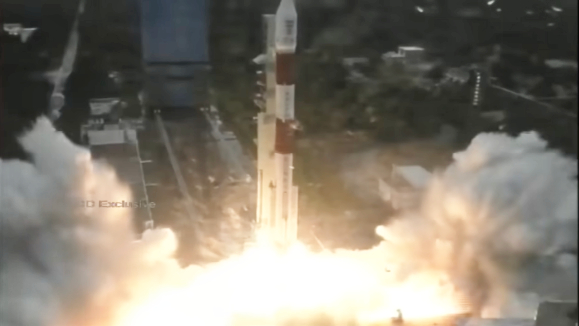
Kleos Scouting Mission launch on Saturday, November 7, 2020,
on the PSLV-C49 from Satish Dhawan Space Centre (SDSC)
SHAR, Sriharikota, India.
Subject to completion of the commissioning of the Scouting Mission, launch and commissioning of the Company’s second cluster (anticipated in mid-2021) and pricing at commercial rates for its launch of (initial) data products comprising the first and in part second clusters of satellite collected data and following successful customer evaluations, the Company’s targeted annualized revenue entering into 2022 is approximately $7m2.
With the launch of the Company’s third cluster (which is expected to occur in late 2021), the Company is positioned to capture both a greater number of subscribers and increased average pricing as its datasets expand in 2022. The number of subscribers and average pricing are both projected to continue increasing for enhanced data products following further constellation expansion.
Technical Development
Data
In preparation for entering fully commercial operations with data from KSM1 in Q2 ‘21, Kleos is testing integration and the many systems that build the data products to enable access and subscription fulfillment.
The system which supports the ingestion and storage of satellite data as well as the processing and dissemination of this data to customers requires Kleos development & implementation of the following components:
• Mission Data System (MDS) which is responsible for retrieving mission data from the Mission Operations Centre as it is retrieved from the satellite clusters through the Ground Station Network. The system stores the data for archival purposes using the Data Storage System and passes the data to the Signal Processing System for geolocation.
• Data Storage System (DSS) that provides the software and hardware to manage interfaces that enable hot and cold storage & archival of the (petabyte scale) volumes of both raw and processed data generated by the system. Kleos has procured significant datacentre resources for the secure storage and access to its data products.
• Signal Processing System (SPS) that receives data from the MDS. Once sufficient data is acquired for processing, Kleos’ proprietary algorithms perform geolocation to produce the signal processing product (including both location and dilution of precision) of the captured areas. The processing outputs are retained and made available to customers using the DSS.
• User Data Management System (UDMS) which is responsible for providing authentication and authorization of customer requests in line with industry best practices. The authorization component ensures customers have secure access to all data (locations, times, and durations) for which they have contracted.
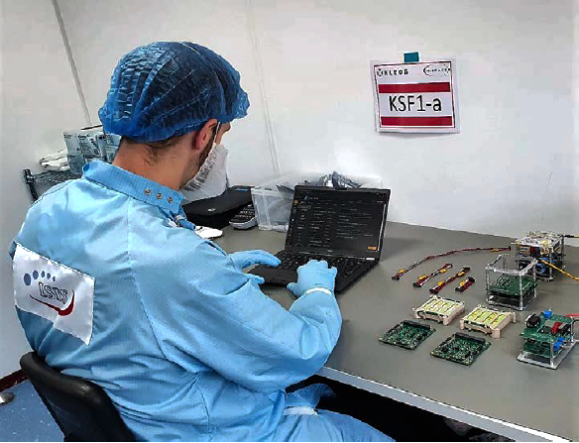
KSF1a Satellite Component Assembly
• Customer API (CAPI) providing the customer with a functional interface to access data products based upon the customer’s authorization provided by the UDMS. Data products will be accessed through a Representational State Transfer (REST) API for client-driven requests and through a WebSocket API for event-drive notifications.
In-line with its Product Roadmap Kleos has released technical product descriptions, and Application Programming Interface (API) Interface Control Document (ICD) for the two RF Intelligence, Surveillance, and Reconnaissance (ISR) data products that will be initially available. Guardian Locate is a geolocation intelligence (GEOINT) product that is fully processed, analytic ready, and designed for ease of use and seamless integration into existing geospatial tools and workflows.
First satellite cluster, KSM1 at milestone
Launched into a 37-degree Low Earth Orbit (LEO), the KSM1 satellites are the world’s first four, satellite cluster flown in a formation targeting a precision geolocation capability.
The satellites are being used to set up the many Space and ground segments for the Company and will provide coverage over key areas of maritime interest, such as the Strait of Hormuz, South China Sea, East and West Africa, and the Southern Sea of Japan. The satellites detect and geolocate radio frequency activity to improve the detection of hidden and illegal activity, and are able to detect transmissions, independent of other systems, even in instances when the Automatic Identification System (AIS) is defeated, imagery is unclear, or targets are out of patrol range.
Post quarter, the KSM1 cluster of satellites:
• Are transitioning from GomSpace commissioning, test, and calibration to their operational state with Kleos Mission Operations Team.
• Formation in transition from that used for systems commissioning to the operational formation (note; the formation of the satellites is not static; they are in constant motion in relation to each other)
o KSM1-b and KSM1-c are in station keeping operational position, with KSM1-a and KSM-d in a parking orbit (an orbit where time must pass to reach the desired final position)
o The formation deployment is highly complex – with the 4 satellite across and along track positioning designed to optimize the independence of approach vector from target location at the areas of highest commercial interest. The cluster enables up to 6 antenna pairs to be used in Kleos proprietary multilateration algorithms – to positively influence dilution of precision and data accuracy. data accuracy.
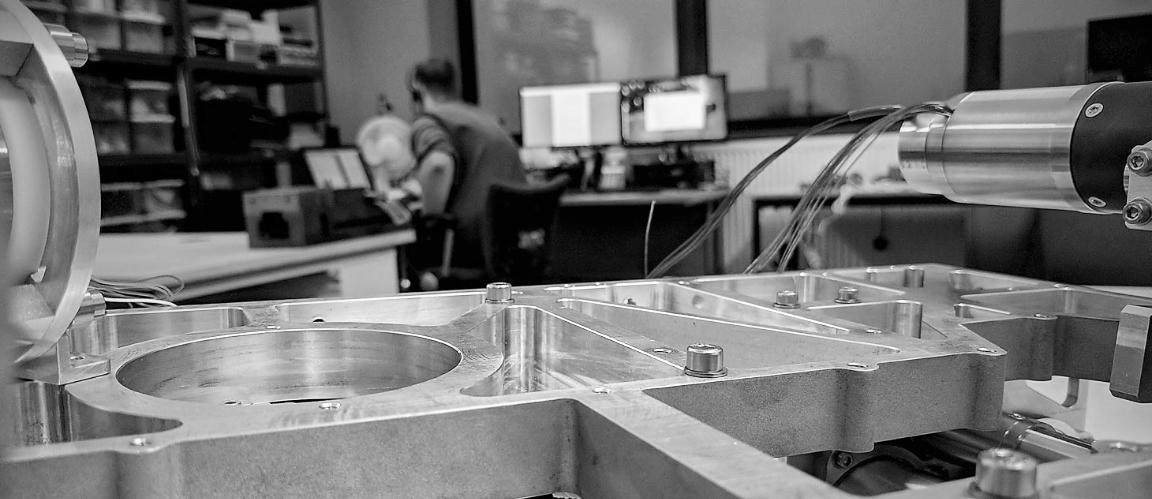
Polar Vigilance satellites pass Integration Readiness Review
The development of the second Kleos satellite cluster, the Polar Vigilance Mission (KSF1), is on track for a mid-2021 SpaceX launch after successfully completing Integration Readiness Review, and the satellites start the build process with satellite builder ISISPACE.
Specializing in small satellite solutions, Netherlands- based ISISPACE has more than 15 years’ experience in the design, manufacture, and operation of smallsats.
The four Polar Vigilance nanosatellites are in the assembly and testing phase in preparation for final acceptance. Kleos’ satellites will then be delivered to the launch site for integration into the SpaceX Falcon 9 launch vehicle. The KSF1 Polar Vigilance Mission satellites are scheduled for a mid-2021 launch onboard a SpaceX Falcon 9, under a rideshare contract with Spaceflight Inc. The KSF1 satellites will launch into a 500-600km Sun Synchronous orbit, increasing Kleos’ coverage to the north and south of the 37° inclination of the Scouting Mission satellites.
Kleos Space Chief Technical Officer (CTO) Miles Ashcroft said, “Development of the KSF1 cluster is progressing at an incredible pace with delivery to site planned for the end of May. Kleos is leveraging the experience and enthusiasm of its satellite builder, Netherlands- based ISISPACE, to develop and deliver quickly as well as improve hardware and software capability. We are growing our constellation rapidly in 2021 with a further cluster scheduled for launch towards the end of the year. Every satellite cluster launched increases the ground covered and the time covered, thus, the value of our radio frequency geolocation data increases, enabling tiered subscription licenses for governments and commercial entities to be offered.”
Third satellite cluster development in progress scheduled for the end of 2021 launch.
Kleos and ISISPACE have developed the design specification and are constructing the end to end program to build and support, the Polar Patrol Mission (KSF2) (ISISPACE are also currently building Polar Vigilance satellites (KSF1)), that are booked on a SpaceX Falcon 9 launch scheduled for end 2021 under contract with rideshare provider Spaceflight Inc. growing the constellation further.
The four KSF2 Polar Patrol Mission satellites will launch into a 500-600 km Sun Synchronous Orbit (SSO), complementing KSM1 and KSF1 satellite clusters increasing cover of areas of interest.
Corporate Development
New senior executive appointment in US engineering office Kleos US subsidiary, Kleos Space Inc., has appointed experienced satellite software and systems engineer Vincent Furia as Technical Director. Highly experienced, Mr. Furia was previously Space Operations Director at smallsat operator Spire Global, where he was responsible for managing a constellation of more than 100 satellites and 30 ground stations. He brings more than eight years’ program and project management experience to Kleos and has 15 years’ expertise in software and systems engineering, including 11 years at global aerospace and defence technology innovator Harris Corporation.
Mr Furia’s appointment follows the establishment of Kleos’ Denver engineering office in January and builds on the recent preparation for commercialization of its radio frequency geolocation intelligence data with the previous US-based appointments of Chief Revenue Officer Eric von Eckartsberg, Product Manager Guillermo Gutierrez and Sales Executive Alex Johnson.
Kleos has engineering offices in Denver,Colorado, the UK and Luxembourg. Targeting operational excellence In order to execute, in 2021 Kleos is putting in place the foundations for scalable, sustainable and rapid growth. Within the quarter operational systems and processes that facilitate customer, stakeholder, partner and employee satisfaction have progressed with:
• A first all-hands company town hall executed, further town halls are being scheduled on quarterly basis moving forward
• The Company operational and engineering data being transferred to a new system that enables NIST compliance and improve our security in eyes of customers
• Customer integration processes and procedures being implemented along with creation of standard sales Terms & Conditions for the data products
• The introduction of global Health & Safety systems for all facilities and employees • An employee performance management system put in place to help with personal development and ensure alignment with Company objectives.
• The development of a global recruitment plan to facilitate rapid Company growth in a managed way.
US Roadshow
Post lodgement of the presentation deck with ASX on March 11, 2021, management commenced a multi- week, non-capital raise roadshow to tell the Kleos story. The key objective was to increase awareness among US-based institutional investors and influential research analysts, portfolio managers, bankers, industry experts and key journalists.
Management described the Company’s differentiated RF data-as-a-service model, technology and useful applications to many firms, with follow-up meetings continuing.
The presentations were well-received, resulting in heightened awareness of Kleos and the space ISR sector among U.S. investors as well as invitations to participate in future space-industry conferences within one of the world’s most sophisticated space industries.
Outlook
In the coming quarter, Kleos will commence generating early adopter subscription revenues from the release of its initial data products, further supporting the Company’s existing cash and equivalents balance of 5.7 million euros (A$8.7 million).

Development of the Company’s second and third satellite clusters remain on track, targeting mid-2021 and December 2021 launches, respectively. These launches will increase Kleos’ product offering, with the Company targeting 50 data subscribers by the end of 2021. kleos.space
References
1 Global Geospatial Solutions Market Report 2019-2025 | $549 Billion by 2025 - ResearchAndMarkets.com
2 The forward looking statements relating to targets involve known and unknown risks, uncertainties and other factors that may cause the Company’s actual results, performance and achievements to differ materially from any future results, performance or achievements, expressed or implied by these forward-looking statements. Relevant factors may include, but are not limited to, technical and launch delays, foreign exchange fluctuations and general economic conditions, increased costs, the risk and uncertainties associated with space technology, political and social risks, changes to the regulatory framework within which the Company operates or may in the future operate, environmental conditions including extreme weather conditions, recruitment and retention of personnel, industrial relations issues and litigation. For further information as to the risks which may impact the Company’s results and performance, please see the risk factors included in the Prospectus lodged with ASX in August 2018.


